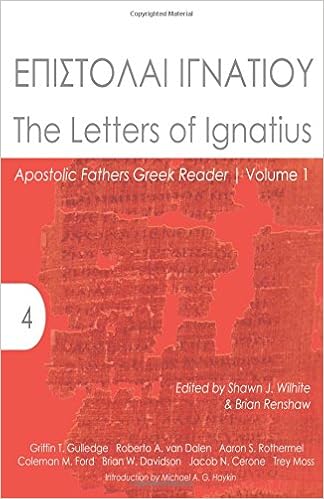 I finished the first article in the book Septuagint Research: Issues and Challenges in the Study of the Greek Jewish Scriptures. In his article “In a Mirror, Dimly—Reading the Septuagint as a Document of Its Times,” Cameron Boyd-Taylor sounds a warning for scholars and prospective students of the Septuagint. Boyd-Taylor makes the reader aware of the fact that the LXX is not a homogenous document. The documents we currently associate with the title, “Septuagint” have been the result of numerous translators, at various points in time and in the context of countless communities.
I finished the first article in the book Septuagint Research: Issues and Challenges in the Study of the Greek Jewish Scriptures. In his article “In a Mirror, Dimly—Reading the Septuagint as a Document of Its Times,” Cameron Boyd-Taylor sounds a warning for scholars and prospective students of the Septuagint. Boyd-Taylor makes the reader aware of the fact that the LXX is not a homogenous document. The documents we currently associate with the title, “Septuagint” have been the result of numerous translators, at various points in time and in the context of countless communities.
The layers of complexity associated with the Septuagint must make the student/scholar cautious when seeking to identify “…evidence for some specific intellectual or religious development, which can then be pinned down historically. Such use of the Septuagint is frequently made by students of Christian origins, who wish to trace an intellectual trajectory from some social formation in Hellenistic Judaism through to the world underlying the New Testament” (15-16). Boyd-Taylor uses the work of Jonathan Z. Smith on the Greek version of Ps 15:9 as example.
Herein ἐπ’ ἐλπίδι “in hope” translates לבטח “to trust/to be secure/secure.” Combined with the LXX’s rendering of שחת “the Pit” as διαφθοράν “corruption,” Smith concludes that this translation is a product of a Proto-Pharisaic scholar. That is to say, the Greek rendering of this Psalm results in a resurrection theology.
Psalm 16:9-10
Therefore my heart was glad, and my tongue rejoiced;
Moreover my flesh will tent in hope
For you will not abandon my soul to Hades,
or let your devout one see corruption.
This conclusion is founded upon a number of assumptions that must not be allowed to go unchecked:
1) that “in hope” has obtained a degree of terminus technicus, i.e. eschatological hope.
2) that “corruption” is not within the semantic range of “the Pit” (Boyd-Taylor shows otherwise)
3) the translators intention is, in essence, to provide an interlinear for his readers
4) and that the appropriate Sitz im Leben “life-setting/context” can be accurately discerned.
I thought these criticisms would have led Boyd-Taylor to “Finish Him” in his conclusion. Instead, he concedes the fact that ἐλιπίδι is “far afield” semantically and something can indeed be said for its presence. He left me even more baffled with his final words, “We have to proceed carefully, since, on the one hand, there were undoubtedly more sectarian formations in Second Temple Judaism than are attested in our sources, and on the other, it is difficult to identify issues on which such parties as we know of can be securely contrasted. Having said this, it is worth considering that there may well be specific halakic matters on which we might yet be able to identify Proto-Pharisaic tendencies within the Septuagintal corpus, but that is a subject for another day” (31).
It is intimidating to enter a field where the conclusions are so tentative. And yet, it is a reminder to the Textual Critic, no matter his material, that internal evidence can often be used to make a case for both sides of the argument.








